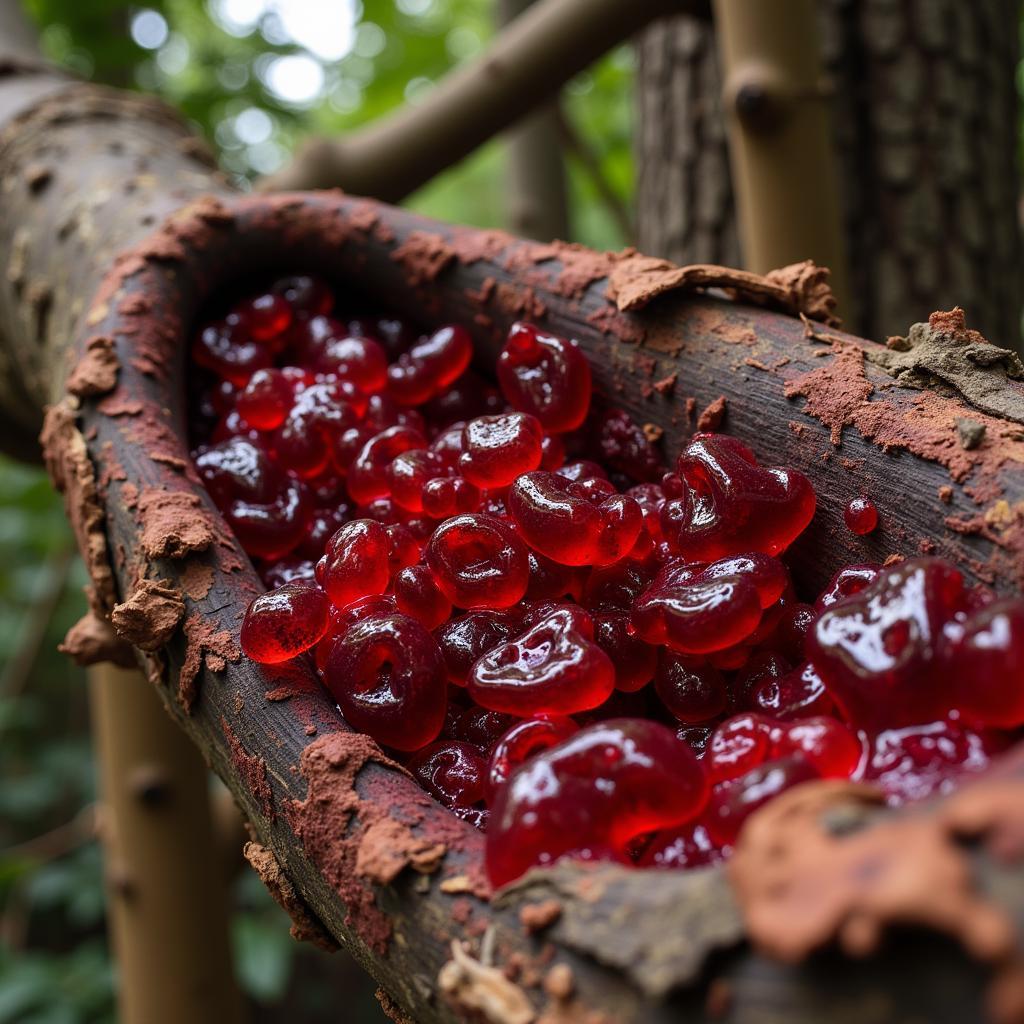Dragon’s Blood for Sale: Everything You Need to Know
October 9, 2024Dragon’s blood – an evocative name for a substance steeped in history and mystery. But what exactly is it, and why is it so sought after? Contrary to what its dramatic name might suggest, dragon’s blood doesn’t originate from mythical beasts. Instead, it’s a vibrant red resin harvested from a variety of plant sources, each with its own unique properties and applications.
 Red resin droplets oozing from a tree trunk
Red resin droplets oozing from a tree trunk
Unmasking the Mystery: Origins and History of Dragon’s Blood
The term “dragon’s blood” encompasses resin obtained from several distinct plant species, primarily from the genus Dracaena, found in regions like the Canary Islands, Socotra, and Southeast Asia. Historically, these resins were highly prized by ancient civilizations for their diverse uses, spanning medicine, art, and even magic.
 Ancient scroll depicting medicinal uses of dragon's blood
Ancient scroll depicting medicinal uses of dragon's blood
From Ancient Remedies to Modern Applications
Traditional medicine systems, notably in China, have long incorporated dragon’s blood for its purported healing properties. It’s been used to address a range of ailments, from wound healing and pain relief to digestive issues and respiratory problems. While scientific research is ongoing, some studies suggest potential antibacterial and anti-inflammatory effects of certain compounds found in dragon’s blood resin.
A Splash of Color: Dragon’s Blood in Art and Crafts
The intense crimson hue of dragon’s blood resin has made it a coveted pigment for centuries. Artists and artisans have utilized it to create vibrant dyes, paints, and varnishes. Its use in violin making, particularly for varnishing, is well-documented, lending instruments a rich, warm tone and a beautiful finish.
Finding Your Own Dragon’s Blood: What to Look For
Today, dragon’s blood is readily available in various forms, including raw resin, powders, capsules, and extracts. When purchasing, it’s crucial to consider the source and intended use to ensure quality and authenticity.
Conclusion
Dragon’s blood, far from being a mythical substance, offers a fascinating glimpse into the interconnectedness of nature, history, and human ingenuity. Whether you’re intrigued by its medicinal potential, artistic applications, or simply its captivating history, dragon’s blood continues to fascinate and inspire.
Frequently Asked Questions
- What does dragon’s blood smell like? Dragon’s blood has a subtly sweet, slightly spicy, and earthy aroma, often compared to benzoin or myrrh.
- Is dragon’s blood safe to ingest? While traditionally used in medicine, it’s crucial to consult a healthcare professional before ingesting dragon’s blood, as dosage and potential interactions can vary.
- Can dragon’s blood stain? Yes, dragon’s blood resin is a potent dye and can stain surfaces, clothing, and skin.
Need more information? Explore our other articles on:
- The historical uses of dragon’s blood in different cultures
- Sustainable harvesting practices of dragon’s blood resin
- Modern scientific research on the medicinal properties of dragon’s blood
Get in touch!
For any inquiries or assistance, contact us:
- Phone: 0915117113
- Email: [email protected]
- Address: To 3 Kp Binh An, Phu Thuong, Viet Nam, Binh Phuoc 830000, Vietnam
Our dedicated customer support team is available 24/7 to assist you.